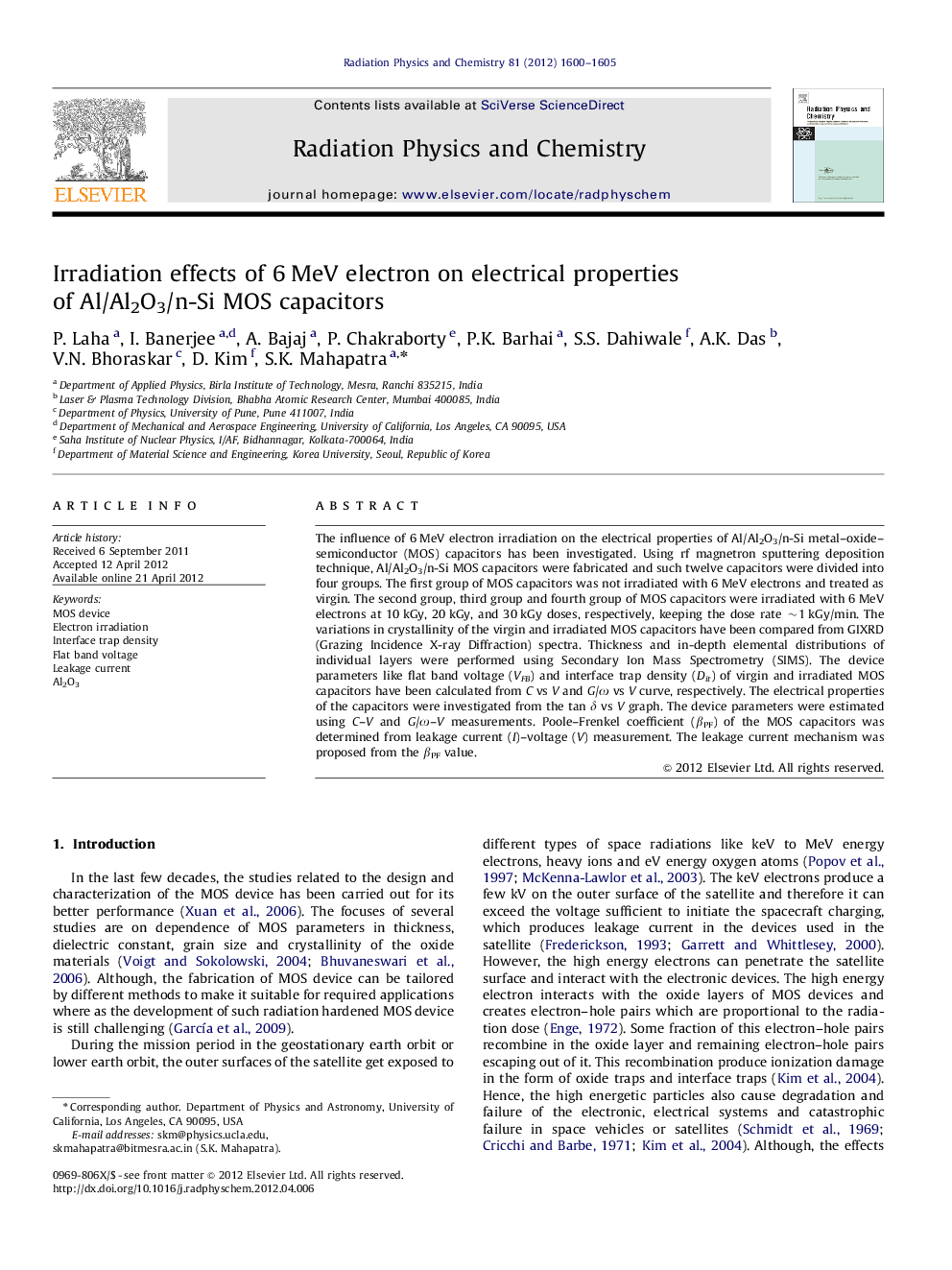| Article ID | Journal | Published Year | Pages | File Type |
|---|---|---|---|---|
| 1886387 | Radiation Physics and Chemistry | 2012 | 6 Pages |
The influence of 6 MeV electron irradiation on the electrical properties of Al/Al2O3/n-Si metal–oxide–semiconductor (MOS) capacitors has been investigated. Using rf magnetron sputtering deposition technique, Al/Al2O3/n-Si MOS capacitors were fabricated and such twelve capacitors were divided into four groups. The first group of MOS capacitors was not irradiated with 6 MeV electrons and treated as virgin. The second group, third group and fourth group of MOS capacitors were irradiated with 6 MeV electrons at 10 kGy, 20 kGy, and 30 kGy doses, respectively, keeping the dose rate ∼1 kGy/min. The variations in crystallinity of the virgin and irradiated MOS capacitors have been compared from GIXRD (Grazing Incidence X-ray Diffraction) spectra. Thickness and in-depth elemental distributions of individual layers were performed using Secondary Ion Mass Spectrometry (SIMS). The device parameters like flat band voltage (VFB) and interface trap density (Dit) of virgin and irradiated MOS capacitors have been calculated from C vs V and G/ω vs V curve, respectively. The electrical properties of the capacitors were investigated from the tan δ vs V graph. The device parameters were estimated using C–V and G/ω–V measurements. Poole–Frenkel coefficient (βPF) of the MOS capacitors was determined from leakage current (I)–voltage (V) measurement. The leakage current mechanism was proposed from the βPF value.
► The electron irradiation effects make variation in the device parameters. ► The device parameters changes due to percentage of defects and charge trapping. ► Leakage current of Al/Al2O3/n-Si changes due to interface dangling bonds. ► The leakage current mechanism of MOS structures is due to Poole-Frenkel effect.
